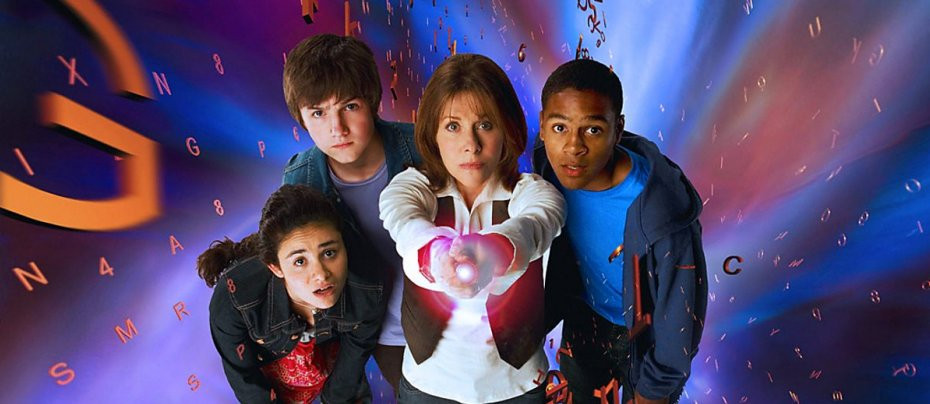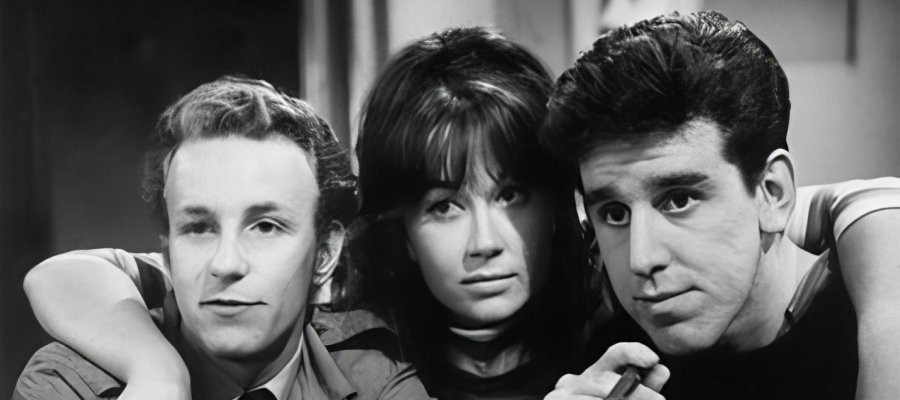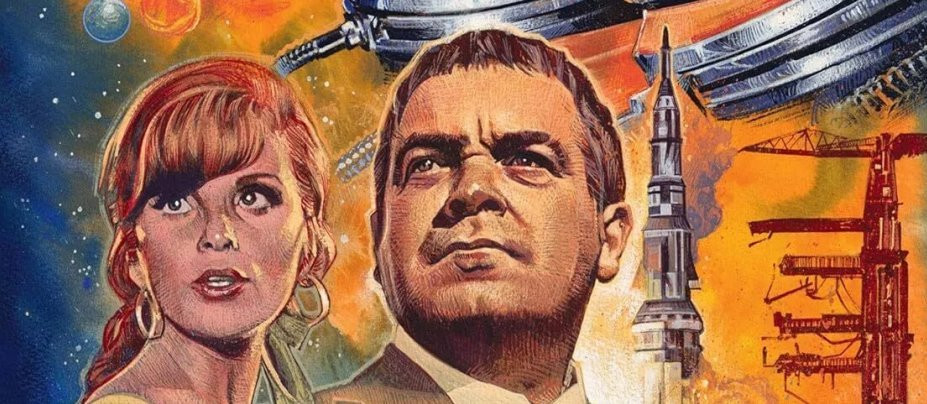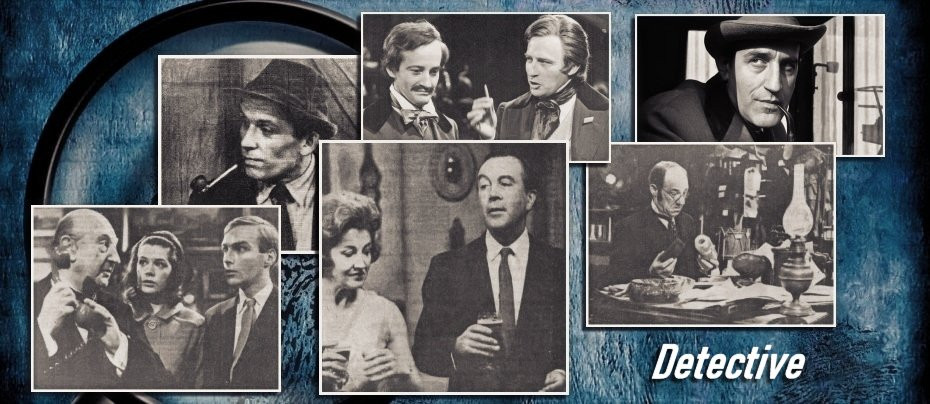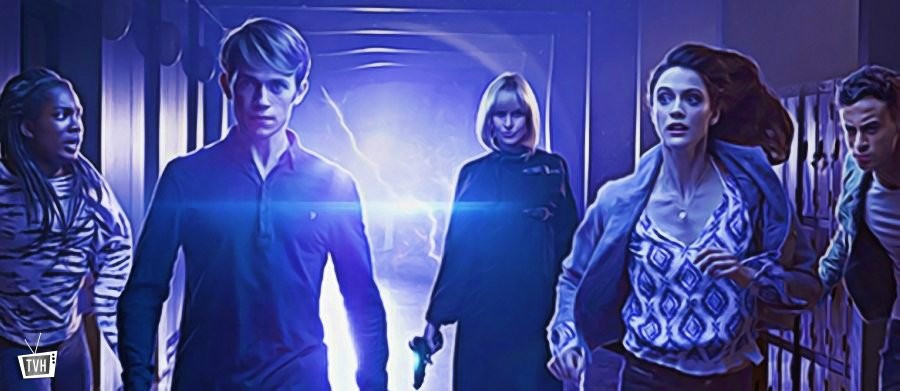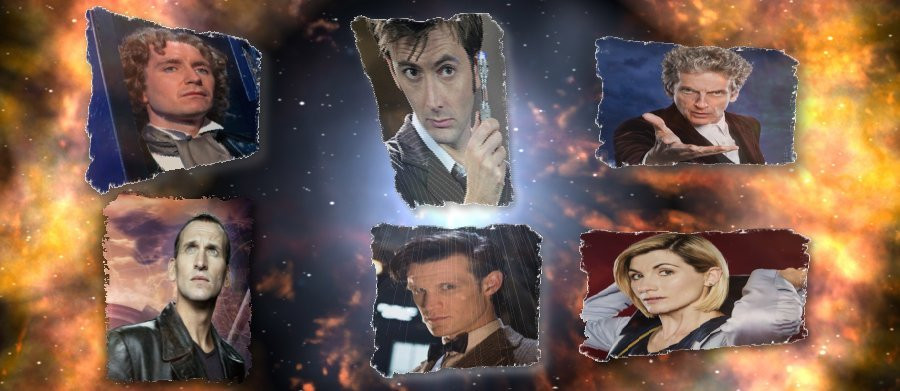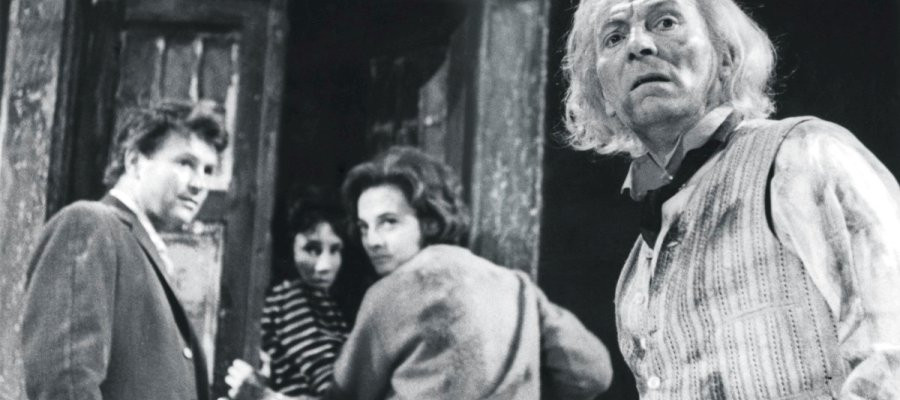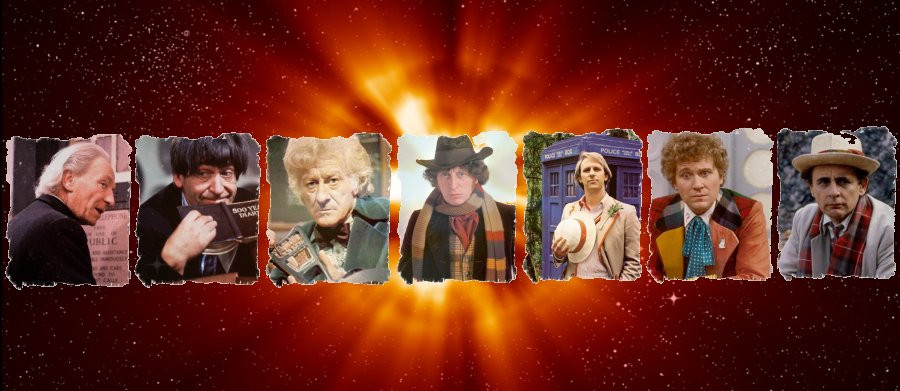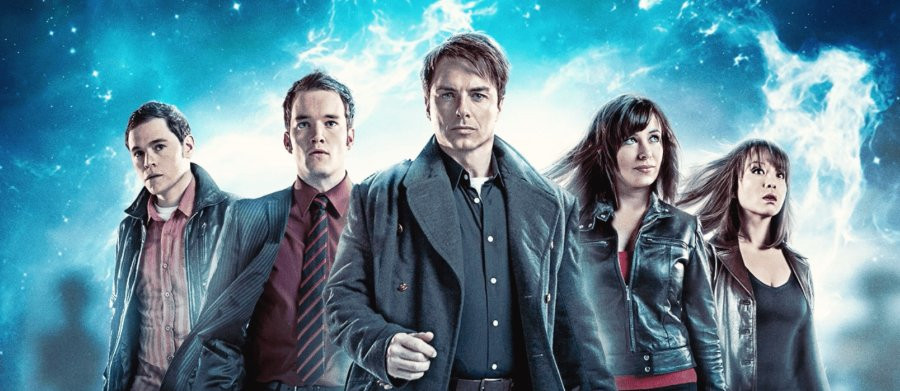Battlefield (1989)
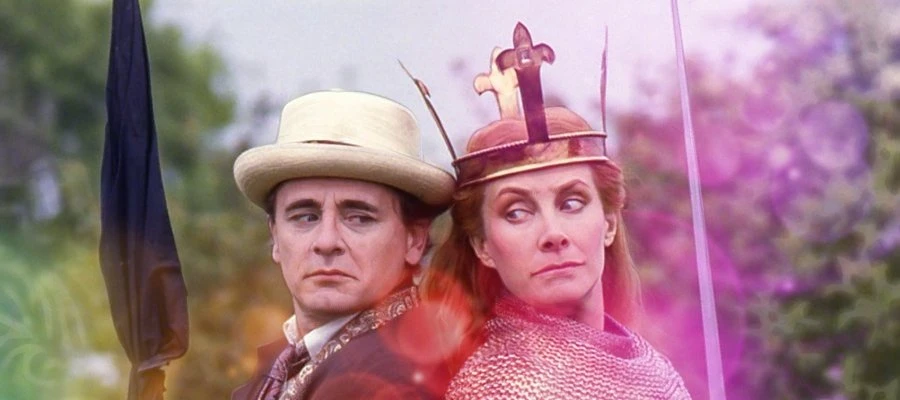
Review by Daniel Tessier
Kicking off the final season of the original run, Battlefield sees Doctor Who finally tackling Britain’s most treasured mythology. It’s remarkable that the series took so long to call on Arthurian legend, especially considering that one of its original stars, William Russell, was the eponymous lead of The Adventures of Sir Lancelot. You’d think the programme would be steeped in Arthuriana, but no; the Matter of Britain was not, it seems, a matter for Doctor Who.
That is, until this four-part serial by Ben Aaronovitch. Best known today as the author of the Rivers of London book series, Aaronovitch had also scripted the opening story for the previous season, Remembrance of the Daleks. The writer had grown up as a fan of Doctor Who and, like his previous script, Battlefield is as much a celebration of the mythology of Doctor Who as it is of the Arthurian tales. Aaronovitch has been openly critical of how this serial turned out, satisfied with neither his script nor the production, but Battlefield is a wonderfully fun adventure. It’s also an intriguing look at where Doctor Who might have gone into the 1990s, had it not been cancelled at the end of the 26th season.

Battlefield sees the Doctor and Ace, played by Sylvester McCoy and Sophie Aldred, waylaid by a distress signal that has travelled “sideways in time,” from another reality adjacent to their own. They trace it to Lake Vortigern, somewhere in the South-West of England, arriving sometime in the 1990s, a few years into Ace’s (and the contemporary viewers’) future. An archaeological dig around the lake has disturbed something that has lain dormant for centuries. Meanwhile, UNIT is transporting a nuclear missile through the area, for some reason. (UNIT often got lumbered with these sorts of jobs and was then helpfully on hand when something weird or otherworldly turned up.)
Predicting the future is never easy, and Doctor Who in particular has had a poor show of it over the years. Battlefield’s efforts to add a little colour and detail to its near future are especially funny, viewed over thirty years on. In this version of the nineties, Brits commonly pay for things with £5 coins; car phones are ubiquitous; and there’s a king on the throne, Elizabeth II having seemingly abdicated or died several decades early. The actual year isn’t stated, but it doesn’t seem like it could be as early as 1992; yet both the Soviet Union and Czechoslovakia are both still extant states, sending troops to serve in UNIT. Then again, Doctor Who’s near future, or even its present, have never aligned very well with reality.
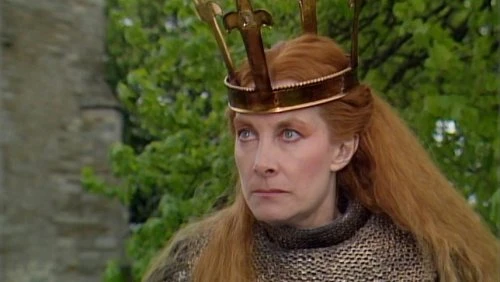
It isn’t long before knights in shining armour are falling to the Earth like meteorites – rather inexplicably, seeing that they come from another dimension, not from outer space. In another reality, where magic and technology exist side-by-side, the Earth is under the thumb of Morgaine of the Faye, a powerful sorceress and “battlequeen,” and the long-time enemy and lover of King Arthur. Also known in legend as Morgana and Morgan-le-Fay, Morgaine is, naturally, played by the late, great Jean Marsh. In a long and storied career, Marsh carved out something of a niche playing evil witches during the 1980s, most notably as the most frightening thing in both Willow and Return to Oz. She outdid herself in 1989, though, playing Morgana/Morgaine in two different productions; she also appeared in an American movie of A Connecticut Yankee in King Arthur’s Court.
Battlefield is an enjoyable mish-mash of science fiction and fantasy, a children’s TV adventure that nonetheless courts fans of Doctor Who’s past. Marsh was already something of a legendary figure in Doctor Who lore, having appeared in two serials in the 1960s that only partly exist in the archives, having been victims of the BBC’s tape-wiping policy of the time. After playing the Princess Joanna in 1965’s The Crusade, Marsh returned for the following season as space soldier and TARDIS traveller Sara Kingdom in the epic serial The Daleks’ Masterplan. Plus, long before either of these, she had been married to future Third Doctor Jon Pertwee.
The callback star, however, was Nicholas Courtney. Courtney had first appeared on Doctor Who as Bret Vyon alongside Marsh in The Dalek Masterplan, before being cast as Colonel, later Brigadier Lethbridge-Stewart, head of UNIT. Aside from a blink-and-you’ll miss it cameo in the previous season’s Silver Nemesis, Courtney hadn’t appeared on the series since 1983 and hadn’t been a recurring cast member since 1975. As the Doctor’s long-serving friend and ally, the Brigadier’s return was a big deal for fans. Coming out of retirement to help the Doctor one more time, the Brigadier’s presence was a handover to a new version of UNIT, the military organisation themselves having not appeared since 1976. It was always intended that this be the last appearance of the Brigadier on Doctor Who, but the original plan was to ensure its finality: he was meant to die saving the day. Reportedly, Aaronovitch simply couldn’t bring himself to kill off the character.
Marsh gives easily the best performance in the serial, while Courtney trades on his familiar charisma. The two have good chemistry, sadly only sharing a short scene together, respectfully meeting as two warriors prior to battle. Morgaine is a fascinating character, shamed when she realises that she has dishonoured herself by drawing blood at a war memorial, and capable of killing and granting incredible gifts with equal indifference. The Brigadier and the Doctor appear to be the only characters in the story she truly respects, one as an equal in the field, the other as a long-time enemy.
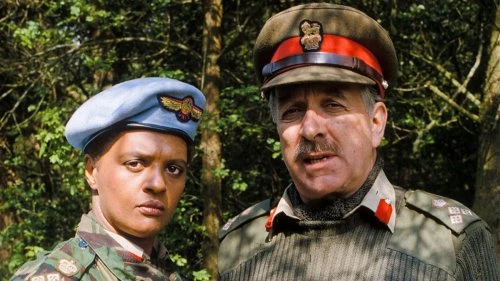
Lethbridge-Stewart isn’t the only brigadier present, however. Actually commanding the UNIT mission is Brigadier Winifred Bambera, a new sort of Brig for a new era of the show. Played by Angela Bruce (Angels, Press Gang, Bad Girls), Bambera is a no-nonsense sort who runs a tight operation. At least on paper; she’s a little too quick to let the Doctor walk around unaccompanied after he breaks through her security and flashes a UNIT pass that, apparently, still has Jon Pertwee’s mugshot on it. She also has the embarrassing habit of uttering the kid-friendly curse “Shame,” at every available opportunity. Bruce doesn’t put in a very good performance, even considering she hasn’t got very strong material to work with. She’s one of those actors who does better with realistic material, rather than science fiction, even though she’s had plenty of practice with the latter. (She was Lister’s parallel universe female alter ego on Red Dwarf just the year before.)
Having a black woman in charge of a UNIT squad does show how the series is trying to move with the times and be more inclusive and representative. It’s also the first time that UNIT actually comes across as the international organisation it’s meant to be. They are the United Nations Intelligence Taskforce after all (well, not any more, after the real UN complained in 2005). Robert Jezek, a specialist at hiding his Canadian nationality under foreign accents, is quite convincingly Polish as Bambera’s number one, Zbrigniev; while the actually Polish Dorota Kwiatkowska plays the lovely Flight Lieutenant Lavel, who is, apparently, French.
Arriving from the other world are Ancelyn, a noble knight who fights for Camelot, played by the terribly dashing and charming Marcus Gilbert (Riders, Biggles, Army of Darkness); and his nemesis Mordred, son of Morgaine (and presumably Arthur), played with sneering relish by Christopher Bowen (Castles, Knights of God, Tomorrow Never Dies). Ancelyn shares a cute (and, of course, very chaste) romance with Bambera, while Mordred tries his luck with Lavel, quickly put an end to by Morgaine. Ace, meanwhile, strikes up a friendship with Shou Yuing, a young woman assisting an archaeologist (James Ellis – Z Cars, Nightingales). Played by Ling Tai (Spatz, Crackerjack), Shou Yuing shares Ace’s interest in blowing things up, and her access to the archaeological dig helps when the Doctor and Ace are shown a carving in mysterious runes. “Dig hole here,” the Doctor helpfully translates; when asked what it says that in, he replies, “My handwriting.”
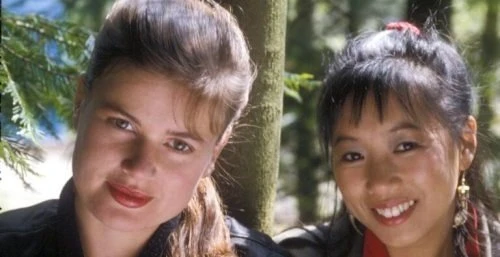
This is part of the most fascinating element of this story. Ancelyn immediately recognises the Doctor – as Merlin. What follows is some beautiful dialogue: “(it is) not your aspect, but your manner that betrays you. Do you not ride the ship of time? Does it not deceive the senses, being larger within than without?”
The full truth remains mysterious, but it appears that the Doctor, at some point in his personal future in another regeneration, arrives in the parallel world and aids King Arthur in the battle against Morgaine, taking on the name Merlin. This future Doctor has set up the events of this story based on his own memory, leaving a spaceship beneath the lake, beaming out the distress signal to lure his earlier self. With Merlin leaving clues around for him, the younger, only Seventh, Doctor finds himself in an unusual position; normally used to pulling the strings, he finds himself being manipulated by his own future self.
This does raise some concerning questions, though. For one thing, the spaceship, final resting place of King Arthur, is not only submerged in a lake and accessible only by an underground tunnel; it’s riddled with booby traps. The Doctor is attacked by a (very unconvincing) magical green flying serpent, while Ace is trapped inside a tank that’s rapidly filling up with water. We might ask just why the future Doctor was happy to put himself and his companion through all this. Unless, of course, he had to, because he remembered that it had already happened… Regardless, the water tank stunt was a mistake on the real world crew’s part as well. The glass in the tank began to crack, which put Sophie Aldred, and the technicians working with electrical equipment on set, in extreme danger. Fortunately, McCoy noticed the cracks and cut the scene, calling the crew to get Aldred out and the tank drained (swearing heavily so that they knew it wasn’t part of the dialogue).
We might also wonder about the Doctor’s eventual fate, given that Morgaine believes she has trapped Merlin forever in “the ice caves.” Is this, then, the ultimate fate of the Doctor? An idea for possible follow-ups for this story was that future regenerations of the Doctor would have adventures in Morgaine and Arthur’s world, each taking place at an earlier point, tying in with T. H. White’s idea that Merlin lived his life backwards through time. Marc Platt, novelising the serial from Aaronovitch’s script and notes, included a prologue in which a red-haired incarnation of the Doctor tended to the injured Arthur on the spaceship. So the Doctor will get to be ginger someday…
For now, though, the Doctor must deal with Morgaine’s increasingly desperate plans of conquest and control of Excalibur. At the end of episode three she summons the Destroyer, a powerful demon capable of destroying the world once he escapes his bonds. The Destroyer is a genuinely impressive creation, a scaly blue monstrosity brought to life by actor Marek Anton beneath then cutting-edge animatronics. It’s easily the best visual effect of the serial, although it could have been even more impressive: an earlier idea was for the Destroyer to appear human at first, before the demonic form tore its way out. This would have been difficult to realise, and itself replaced an earlier, even stranger concept by visual effects designer Mike Tucker. While this went unused, he took it with him to his new position on Red Dwarf, where it eventually became the “self-loathing monster” in the 1991 episode “Terrorform.”
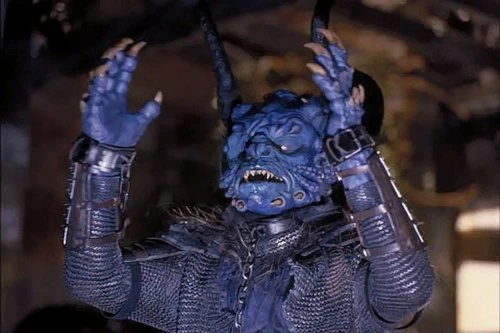
The Destroyer does, unfortunately, show up the pacing issues with the script. Once freed, he spends an awfully long time threatening to destroy the world without actually doing anything, so that the Brigadier has time to get to his heroic stand against the beast. The Destroyer becomes the destroyed, but while this is the climactic moment of the story, there’s still half an episode to go, and the script doesn’t really hold interest for long enough. A last minute gambit involving Morgaine’s theft of UNIT’s bomb gives the episode a brief boost, but since the Destroyer is a very clear analogy for nuclear weapons, bringing out the actual thing seems redundant.
Still, for the most part the script is strong, and Aaronovitch is too hard on himself. The main issues with the serial came afterwards. Michael Kerrigan, primarily a children’s TV director, just isn’t up to the demands of the serial, although in his defence he’s dealing with some underwhelming production design (Destroyer notwithstanding). The biggest culprit, though, is Keff McCullough, who scored this serial, along with five others starring McCoy. Never one for a subtle score, McCullough really goes for it on this one, which has the effect of undercutting the drama rather than enhancing it.
Episode one of Battlefield achieved the lowest ratings of any twentieth century episode of Doctor Who, with none of the following episodes faring much better. While it’s arguably the weakest entry in the final season, it’s unfair to lay its poor performance entirely at the feet of the production itself. The BBC had, by now, effectively given up on Doctor Who, hiding it away on Wednesday evenings and granting it virtually no promotion to generate viewer interest. A lot of viewers likely assumed that Doctor Who had already been cancelled. It’s a real pity, for within this flawed production is a fun, engaging story, elevated by Marsh and Courtney’s dignified performances. Doctor Who would not be renewed for a 27th season, but Battlefield gives us a glimpse of what nineties Doctor Who might have been like: a new, multinational UNIT for a new era, the Doctor facing threats not just from the stars, but from other realities as well.
Of course, Doctor Who didn’t truly end with season 26, continuing in other media and spin-offs until it was revived for BBC1 in 2005. Courtney made another appearance as the Brigadier in the 1993 Children in Need skit Dimensions in Time, followed by the 1995 direct-to-video spin-off drama Downtime, and two BBC Radio serials, The Paradise of Death and The Ghosts of N-Space. After several guest appearances in Big Finish’s range of Doctor Who audioplays, he returned for one final turn in The Sarah Jane Adventures in 2008. He was sadly too unwell to appear one more time opposite David Tennant’s Doctor on the CBBC spin-off the following year, and passed away in 2011.
Jean Marsh made several guest appearances for Big Finish as well, largely as her 1966 character Sara Kingdom, and never as Morgaine – perhaps oddly, given that Big Finish could have pitted her against a number of later Doctors. She continued acting well into the 21st century, passing away on 13th April 2025.


